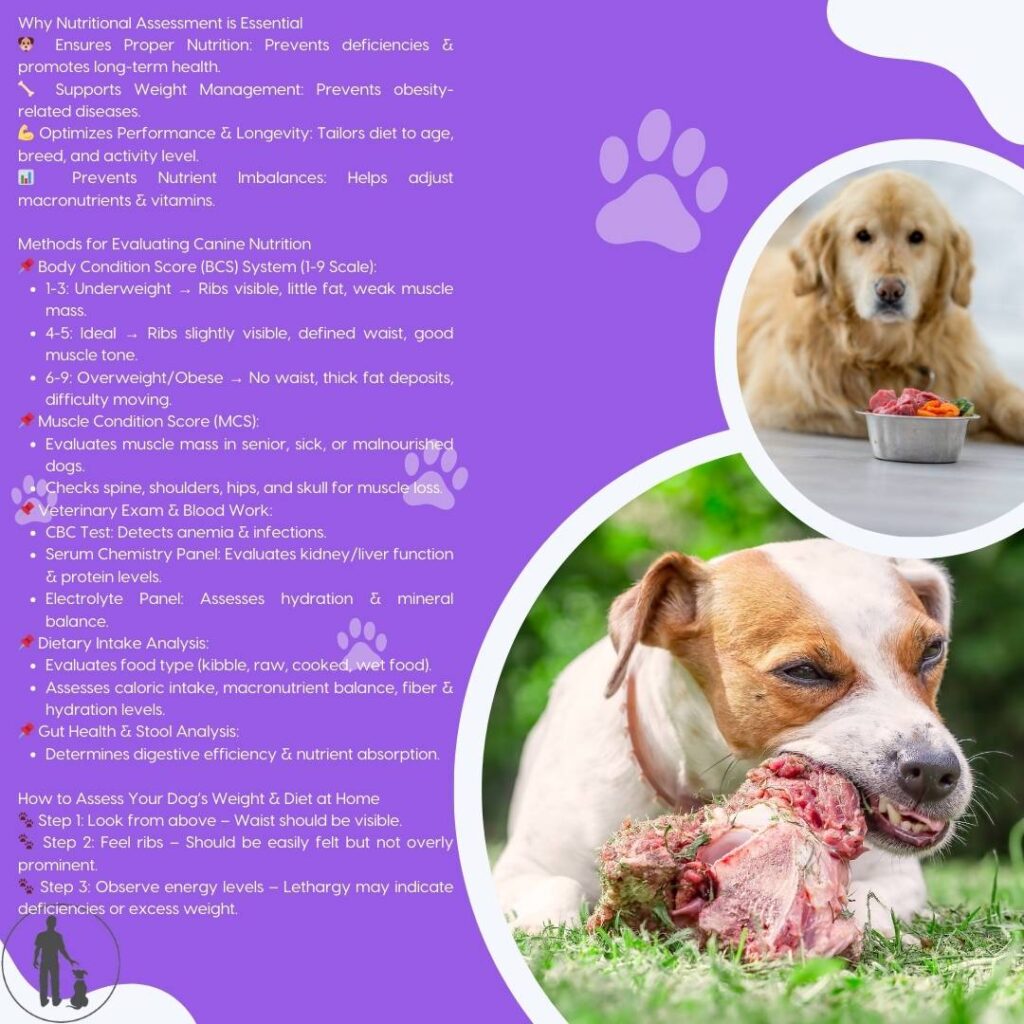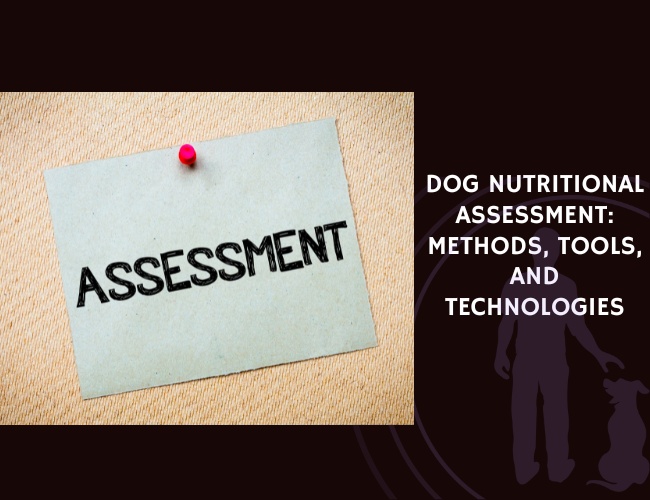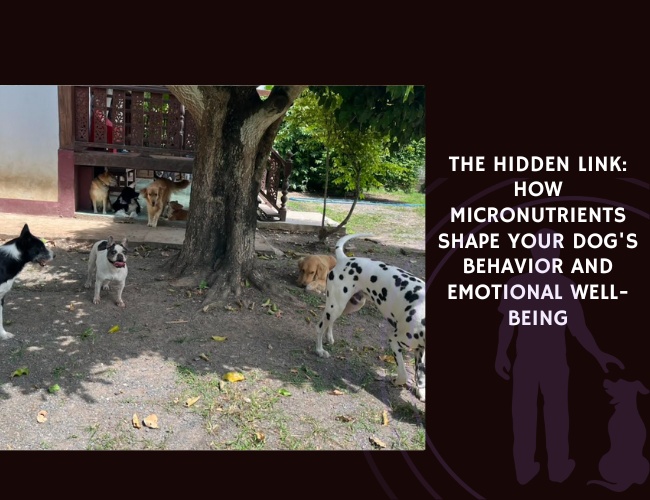Understanding the Importance of Nutritional Assessment
Nutritional assessments for dogs play a crucial role in maintaining their overall health, preventing nutrient deficiencies, managing weight, and optimizing performance and longevity across various life stages. This chapter covers the importance of these assessments and highlights key benefits for dogs of all ages and activity levels.
Prevention of Nutrient Deficiencies and Imbalances in Dogs
A well-balanced diet ensures dogs receive essential vitamins, minerals, and macronutrients. Nutritional assessments help identify deficiencies in protein, fat, or carbohydrates, which can lead to serious health problems if not addressed. For example, deficiencies in protein can cause muscle loss and a dull coat, while insufficient calcium can result in weak bones and dental issues. Identifying these deficiencies through regular assessments allows dog owners to adjust their pet’s diet accordingly, ensuring optimal health.
Role in Weight Management and Obesity Prevention
Proper weight management is crucial for preventing obesity-related diseases such as diabetes, joint problems, and heart disease. Nutritional assessments help determine a dog’s body condition, allowing tailored feeding strategies to prevent weight issues. Overweight dogs might require reduced caloric intake and increased physical activity, while underweight dogs may need more protein and healthy fats to gain weight and improve muscle mass.
Optimization of Performance and Longevity Across Different Life Stages
Active dogs and working breeds often need higher energy intake to support their performance, whereas senior dogs may require specific nutrients to support joint health and overall vitality. Tailoring nutrition to a dog’s life stage can enhance their performance and extend their lifespan. For example, including glucosamine and chondroitin in the diet of senior dogs can help support joint health, while active dogs benefit from high-quality proteins and omega-3 fatty acids for muscle maintenance and joint support.
Different breeds also have varying metabolic rates and health conditions that necessitate specialized diets. By conducting nutritional assessments, personalized nutrition plans can be created to cater to the specific needs of each dog. This customization ensures that dogs receive the right nutrients in appropriate amounts, improving their overall health and well-being.
Nutritional assessments are an invaluable tool for dog owners, enabling them to provide the best possible care for their pets. Through regular evaluations, potential issues can be identified and addressed promptly, contributing to a dog’s long-term health and happiness.
By understanding the importance of nutritional assessments, dog owners can take proactive steps to ensure their pets lead healthy, balanced lives. Monitoring and adjusting diets based on these assessments helps prevent diet-related diseases, manage weight effectively, and optimize performance and longevity.
Next, we’ll delve into the key assessment methods and tools that make this tailored approach possible.
Key Assessment Methods and Tools
Understanding and utilizing the right assessment methods and tools can significantly impact a dog’s nutritional well-being. This section dives into the core techniques used to assess canine health.
Body Condition Score (BCS) System
The Body Condition Score (BCS) is a visual and physical evaluation system that ranges from 1 to 9. This system helps determine if a dog is underweight, at an ideal weight, overweight, or obese.
BCS Scale Evaluation
- 1-3 (Underweight): Ribs, spine, and hip bones are visible. There is little muscle and minimal fat covering.
- 4-5 (Ideal Weight): Ribs are palpable with a slight fat covering. The waist is visible from above, and the abdomen is tucked up when viewed from the side.
- 6-7 (Overweight): Fat deposits over the ribs, and the waist is minimally defined. The abdomen might be slightly rounded.
- 8-9 (Obese): There is a heavy fat covering over the ribs, lack of a visible waist, and difficulty in movement due to weight.
At-Home BCS Assessment
You can perform a basic body condition assessment at home:
- Feel for ribs: They should be palpable but not visible.
- Examine the waist: A visible waist should be seen when viewing the dog from above.
- Observe the side profile: The abdomen should be tucked and not sagging.
Veterinary Physical Examinations
Veterinary physical exams are a crucial part of assessing a dog’s nutritional status. These examinations typically include multiple components.
Components of Veterinary Exams
- Muscle Mass Evaluation: Helps in detecting any muscle loss, particularly important for senior dogs.
- Coat Condition: A dog’s coat can indicate overall health, with a shiny, thick coat often signaling proper nutrition.
- Dental Health: Teeth and gum evaluations can reveal dietary inadequacies.
- Hydration Status: Observing the skin’s elasticity and moisture in gums to assess hydration.
- Signs of Allergies or Other Health Issues: Checking for any skin allergies or other visible health problems.
Blood and Urine Tests for Comprehensive Health Evaluation
Blood and urine tests are essential to get a detailed understanding of your dog’s health and nutritional status.
Types of Blood Tests
- Complete Blood Count (CBC): This test identifies conditions such as anemia or infections.
- Serum Chemistry Panel: Evaluates the functioning of the liver, kidneys, and protein levels in the blood.
- Electrolyte Panel: Checks for proper hydration and mineral balance.
Urinalysis
Urine tests assess kidney function and detect urinary tract infections or other metabolic conditions.

Personalized Recommendations
By utilizing these assessment methods, you can ensure a well-rounded view of your dog’s health. Each method offers unique insights, helping to provide tailored nutritional plans.
Keeping your dog’s health in check with these tools supports overall well-being, performance, and longevity. This comprehensive understanding prepares you to customize their diet effectively. Next, we will explore methods to accurately evaluate your dog’s body composition and the techniques for home assessments.
Evaluating Body Composition
Understanding the BCS Chart from Underweight to Obese Categories
The Body Condition Score (BCS) system is an excellent tool for evaluating your dog’s body composition. It uses a scale from 1 to 9:
- 1-3: Underweight
- Ribs, spine, and hip bones are visible.
- Little muscle mass.
- 4-5: Ideal Weight
- Ribs are palpable with a slight fat covering.
- Visible waist when viewed from above.
- 6-7: Overweight
- Fat deposits over ribs.
- Minimal waist definition.
- 8-9: Obese
- No visible waist.
- Heavy fat covering over ribs, difficulty moving.
This scale helps pet owners and veterinarians determine if a dog needs to lose, gain, or maintain weight for optimal health. Having an ideal BCS (4-5) is crucial to preventing nutrient deficiencies and chronic health issues.
Techniques for Performing At-Home Body Condition Assessments
Performing at-home BCS assessments can be an empowering way to monitor your dog’s health between veterinary visits. Here are some simple techniques:
- Feel for the Ribs:
- Place your hands on your dog’s rib cage. The ribs should be easily felt but not visible.
- Examine the Waist:
- Stand above your dog and look down. There should be a visible waist, with the body tapering behind the ribs.
- Side Profile Check:
- Observe your dog from the side. A tucked-up abdomen (not sagging) signifies a healthy body condition.
These quick checks can help ensure your dog’s weight stays within a healthy range.
Muscle Condition Scoring (MCS) for Detecting Muscle Loss
Muscle Condition Scoring (MCS) is another vital aspect of evaluating body composition. It is particularly useful for detecting muscle loss, which can be a sign of malnutrition or underlying health issues.
MCS assesses muscle mass over key areas of the body such as:
- Temporal Bones
- Scapulae
- Lumbar Vertebrae
- Pelvis
A dog with good muscle mass will have these areas well-filled without prominent bones. Muscle loss can occur due to aging, illness, or inadequate nutrition. Detecting and addressing muscle loss early can improve your dog’s overall health and quality of life.
Summary
By understanding and utilizing the BCS chart, performing at-home assessments, and incorporating Muscle Condition Scoring, you can better manage and maintain your dog’s optimal body composition. These tools are crucial in preventing nutrient deficiencies, aiding weight management, and ensuring long-term health and performance.
As you become more knowledgeable about assessing your dog’s body composition, the next step is to consider dietary adjustments based on these assessment results to further support your canine companion’s health journey.
Customizing Diet Based on Assessment Results
Tailoring your dog’s diet based on their nutritional assessment is crucial for maintaining optimal health. Regular at-home assessments and veterinary consultations can help detect nutrient deficiencies, muscle loss, and prevent chronic health issues. Let’s dive into how you can customize your dog’s diet according to their specific needs.
Dietary Adjustments for Underweight and Overweight Dogs
Feeding Underweight Dogs (BCS 1-3)
If your dog is underweight, it is essential to provide a diet that promotes healthy weight gain. This can be achieved by:
- Increasing protein and healthy fats in their diet. Foods like chicken, salmon, and eggs are excellent choices.
- Adding nutrient-dense foods such as sweet potatoes and pumpkin can provide the needed calories and nutrients.
These dietary changes can help your dog gain muscle mass and improve overall health.
Feeding Overweight Dogs (BCS 6-9)
For overweight dogs, the focus should be on reducing calorie intake and promoting a healthy weight. Key strategies include:
- Reducing caloric intake by 10-20%.
- Increasing fiber and lean protein sources for satiety, such as green beans and turkey.
Consistent monitoring and controlled portions are critical for managing weight effectively.
Specific Nutritional Considerations for Senior and Active Dogs
Diet for Senior Dogs
As dogs age, their nutritional needs change. Senior dogs often require:
- Diets with added glucosamine and chondroitin for joint support.
- Reduced caloric intake if their activity level declines.
A balanced diet for senior dogs should support their joint health and prevent unnecessary weight gain.
Diet for Active and Working Dogs
Active and working dogs have higher energy and protein requirements. To meet their needs:
- Increase high-quality protein for muscle maintenance.
- Supplement with omega-3 fatty acids for joint support.
Providing a nutrient-dense diet ensures these dogs have the energy and nutrients they need to perform optimally.
Addressing Common Nutrient Deficiencies Through Diet Modification
Identifying and correcting nutrient deficiencies is crucial for your dog’s health. Here are some common deficiencies and how to address them:
- Protein Deficiency: Symptoms include muscle loss and a dull coat. Foods like chicken, beef, fish, and eggs can help.
- Omega-3 Fatty Acids Deficiency: Look for dry skin and inflammation. Sources include fish oil and flaxseed.
- Calcium Deficiency: Weak bones and dental issues can be signs. Incorporate bone meal, yogurt, and sardines into the diet.
- Iron Deficiency: If your dog is lethargic or anemic, foods like liver, red meat, and spinach can help.
- Vitamin A Deficiency: Vision problems and flaky skin can indicate this deficiency. Carrots, liver, and pumpkin are good sources.
Adjusting your dog’s diet or incorporating supplements as needed can resolve these deficiencies and improve their overall health.
By understanding and utilizing these dietary strategies, you can ensure your dog maintains a healthy weight, supports their age-specific needs, and avoids common nutrient deficiencies. Remember, regular monitoring and adjustments are essential for maintaining long-term nutritional health.
Now that we’ve covered dietary customizations based on assessment results, making informed and practical dietary changes will be impactful for your dog’s health.
Different Diet Types and Their Impact
When choosing the right food for your dog, it’s vital to consider various diet types and their nutritional impact. Each type of diet offers unique benefits and considerations, and understanding these can help you make the best choice for your furry friend.
Comparison of Diet Types
Commercial Kibble
Commercial kibble is a popular choice due to its convenience and balanced nutrition designed to meet general dietary needs. It’s important, however, to select high-quality kibble that uses quality protein sources and minimal fillers and preservatives. Lower-end kibble can sometimes contain unnecessary additives that may not be optimal for your dog’s health.
Raw/BARF Diet
The Biologically Appropriate Raw Food (BARF) diet consists of raw meat, bones, fruits, and vegetables. This diet is rich in protein and moisture, which can be beneficial for your dog’s hydration and muscle maintenance. Nonetheless, it’s crucial to ensure that the diet is well-balanced in terms of vitamins and minerals to prevent any deficiencies. Raw diets can sometimes be unbalanced and may require careful planning or supplemental nutrients.
Homemade Diet
A homemade diet allows full control over the ingredients used in your dog’s meals. This can be particularly beneficial if your dog has specific dietary restrictions or allergies. Yet, crafting a nutritionally complete homemade diet can be challenging without professional guidance. A veterinary nutritionist can help formulate a balanced diet to ensure your dog receives all necessary nutrients.
Nutritional Benefits and Considerations
- Commercial Kibble:
- Benefits:
- Convenient and easy to store.
- Formulated to be nutritionally complete.
- Considerations:
- May contain fillers, preservatives, and artificial ingredients.
- Quality varies significantly among brands.
- Benefits:
- Raw/BARF Diet:
- Benefits:
- High in protein and natural moisture.
- May improve coat condition and energy levels.
- Considerations:
- Risk of nutritional imbalance if not properly managed.
- Potential for bacterial contamination if food safety is not adhered to meticulously.
- Benefits:
- Homemade Diet:
- Benefits:
- Total control over ingredient quality and composition.
- Adjustable to specific health needs and preferences.
- Considerations:
- Time-consuming to prepare.
- Requires careful planning to ensure nutritional adequacy.
- Benefits:
Importance of Proper Nutrient Balance
Regardless of the diet type, ensuring proper nutrient balance is crucial. A balanced diet supports overall health, energy levels, and longevity. Here are key points to keep in mind:
- Protein: Essential for muscle maintenance and repair. Sources include meats, eggs, and fish.
- Fats: Necessary for energy and healthy skin and coat. Good sources are fish oils and flaxseed.
- Vitamins and Minerals: Vital for various bodily functions, bones, teeth, and immune system health. These must be balanced properly to avoid deficiencies or excesses.
By understanding the strengths and weaknesses of each diet type, you can make informed decisions that cater to your dog’s specific health needs and preferences. This knowledge is essential for fostering your dog’s long-term well-being.
To maintain optimal health, continuous monitoring and adjustments based on your dog’s needs are essential. This proactive approach ensures you’re always providing the best care and nutrition for your loyal companion.

Advanced Nutritional Technologies
DNA-based Nutrition Analysis
Personalized nutrition is at the forefront of modern health management, and our canine companions can benefit greatly from this advancement. DNA-based nutrition analysis offers tailored dietary recommendations based on your dog’s genetic makeup. By analyzing specific gene markers, this technology can reveal:
- Predispositions to certain health conditions
- Nutrient absorption efficiency
- Metabolic rates
This analysis provides a comprehensive understanding of your dog’s unique needs. With these insights, you can craft a diet that optimizes their health, potentially mitigating genetic predispositions to conditions like obesity or digestive issues.
Wearable Devices for Monitoring Health and Activity Levels
Wearable devices are revolutionizing the way we monitor our dogs’ health and activity levels. These tools track a variety of metrics such as:
- Daily activity levels (steps, playtime)
- Caloric burn
- Sleep patterns
- Hydration levels
Devices like these allow you to gain real-time insights into your dog’s daily routine and overall well-being. An increase in activity levels or a sudden decline may signal the need for dietary adjustments. The data collected can be invaluable during veterinary visits, providing a clear picture of changes over time.
Gut Microbiome Testing for Digestive Health Assessment
The gut microbiome is an integral part of your dog’s health, influencing everything from digestion to immune function. Gut microbiome testing analyzes the variety and abundance of microorganisms in your dog’s intestines. This testing can determine:
- Digestive health condition
- Food sensitivities
- Presence of beneficial vs. harmful bacteria
Understanding your dog’s gut health allows for more precise dietary adjustments. For instance, if the test shows an imbalance, you might incorporate probiotics or prebiotics into their diet to restore a healthy balance of gut flora.
Transitioning into long-term healthcare management, combining these advanced technologies with regular assessments ensures that your dog receives the best possible nutrition tailored to their unique needs.
Maintaining Long-term Nutritional Health
Ensuring your dog’s long-term nutritional health is a commitment that involves regular assessments, tailored diets, and proactive disease prevention. Let’s delve into the key practices to help your furry companion thrive across all life stages.
Regular Veterinary Check-ups and Nutritional Assessments
Routine veterinary check-ups are vital for maintaining your dog’s overall health. During these visits, vets perform comprehensive evaluations, including:
- Body Condition Score (BCS): This assessment helps determine if your dog is underweight, at an ideal weight, overweight, or obese.
- Muscle Condition Scoring (MCS): This analysis detects muscle loss, which is especially important for seniors or dogs recovering from illness.
- Physical Examinations: These include checking muscle mass, coat condition, dental health, and hydration levels. Vets also look for signs of skin allergies or other issues that may affect your dog’s well-being.
- Blood and Urine Tests: Tests like the Complete Blood Count (CBC), Serum Chemistry Panel, and Electrolyte Panel are crucial for evaluating internal health, such as kidney and liver function, anemia, or infections.
Monitoring and Adjusting Diet Based on Changing Needs
Your dog’s nutritional needs can change due to age, activity level, health status, and other factors. Here are steps to ensure their diet remains optimal:
- Stay Observant: Regularly monitor your dog’s weight, appetite, and behavior for any changes that could indicate dietary adjustments are needed.
- Vet Consultations: Always discuss any noticeable changes with your vet. They can recommend specific dietary modifications based on your dog’s current health status.
- Adjust Caloric Intake: For example, reduce caloric intake if your dog’s activity level declines or if they are gaining excess weight. Conversely, increase calories if your dog is underweight or highly active.
- Supplement as Needed: Add supplements like glucosamine and chondroitin for joint support in older dogs, or omega-3 fatty acids to support joint health in active dogs.
Preventing Diet-related Diseases Through Proper Nutrition
Preventing diet-related diseases involves recognizing the signs of nutrient deficiencies and addressing them promptly:
- Common Nutrient Deficiencies:
- Protein: Symptoms include muscle loss and a dull coat. Ensure your dog gets plenty of chicken, beef, or fish.
- Omega-3: Dry skin and inflammation indicate this deficiency. Fish oil and flaxseed are excellent sources.
- Calcium: Weak bones and dental issues can arise. Incorporate bone meal, yogurt, or sardines into their diet.
- Iron: Anemia and lethargy are common signs. Red meat, liver, and spinach are nutrient-rich options.
- Vitamin A: Flaky skin and vision problems can signal a lack. Carrots, liver, and pumpkin are effective sources.
Addressing these deficiencies with dietary adjustments or supplements is essential to avoid long-term health issues. Regular veterinary check-ups will also help you stay ahead of any potential problems.
Taking these proactive steps will ensure that your dog’s diet remains balanced and supportive of their overall health, helping them lead a long, happy life.
By maintaining an attentive regimen of regular check-ups, tailored nutritional plans, and proactive health monitoring, you can significantly enhance your dog’s quality of life.

Nutritional assessments are more than just a check-up; they are a roadmap to your dog’s optimal health and happiness. By regularly evaluating your pet’s nutritional status, you’re proactively safeguarding them against deficiencies and excesses that can affect their well-being. Whether it’s through adjusting calories for a healthy weight, incorporating specific nutrients for peak performance, or customizing diets for breed-specific needs, every assessment brings us one step closer to a healthier, more vibrant life for your furry companion.
Don’t let your dog’s nutritional health fall by the wayside. Take the first step towards ensuring your dog thrives at every life stage. Start with a nutritional assessment from a veterinary professional and watch your dog’s health and happiness soar.
Schedule your dog’s nutritional assessment today and embark on a journey to a lifetime of wellness! Your dog will surely thank you with wagging tails and boundless energy.










